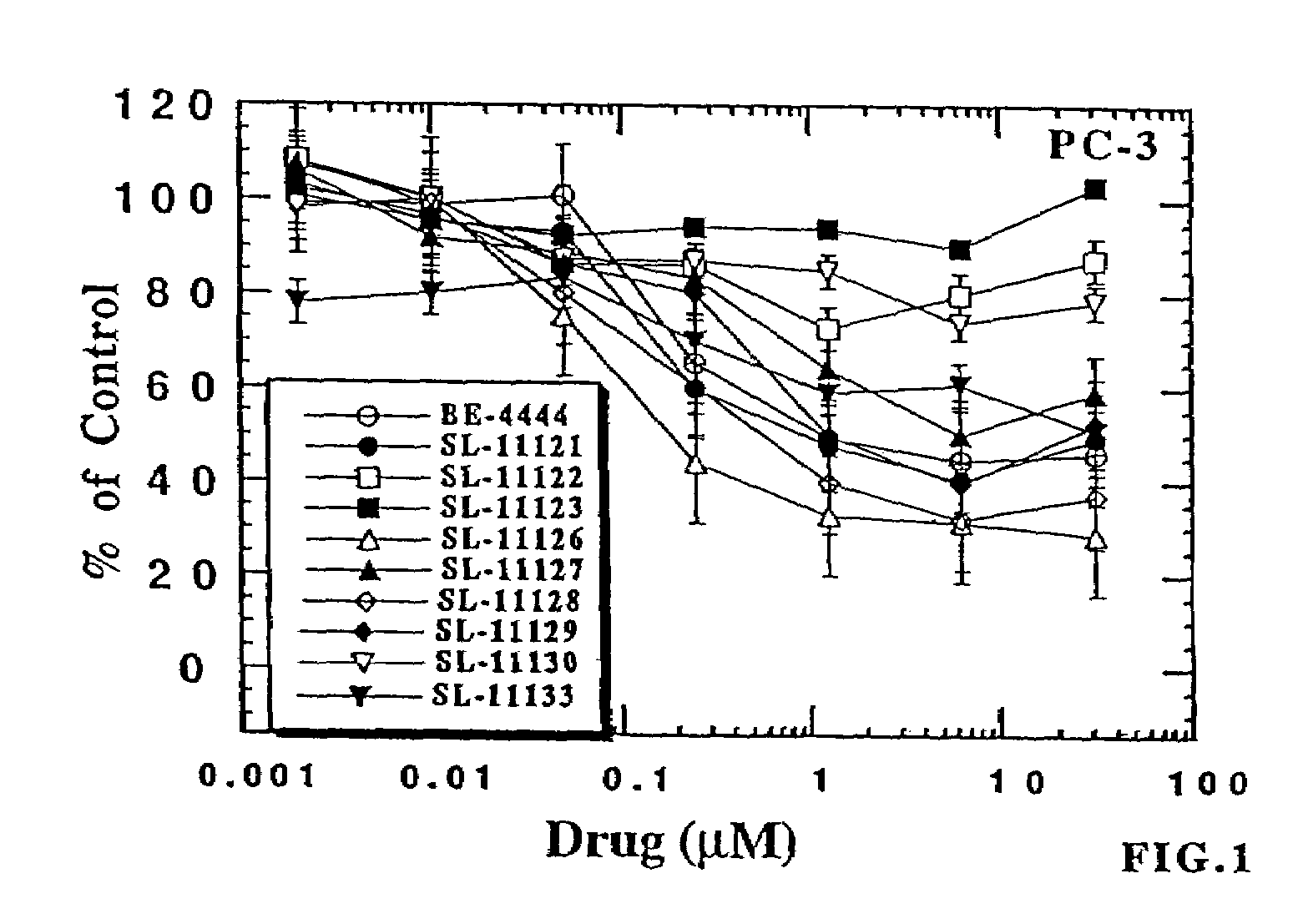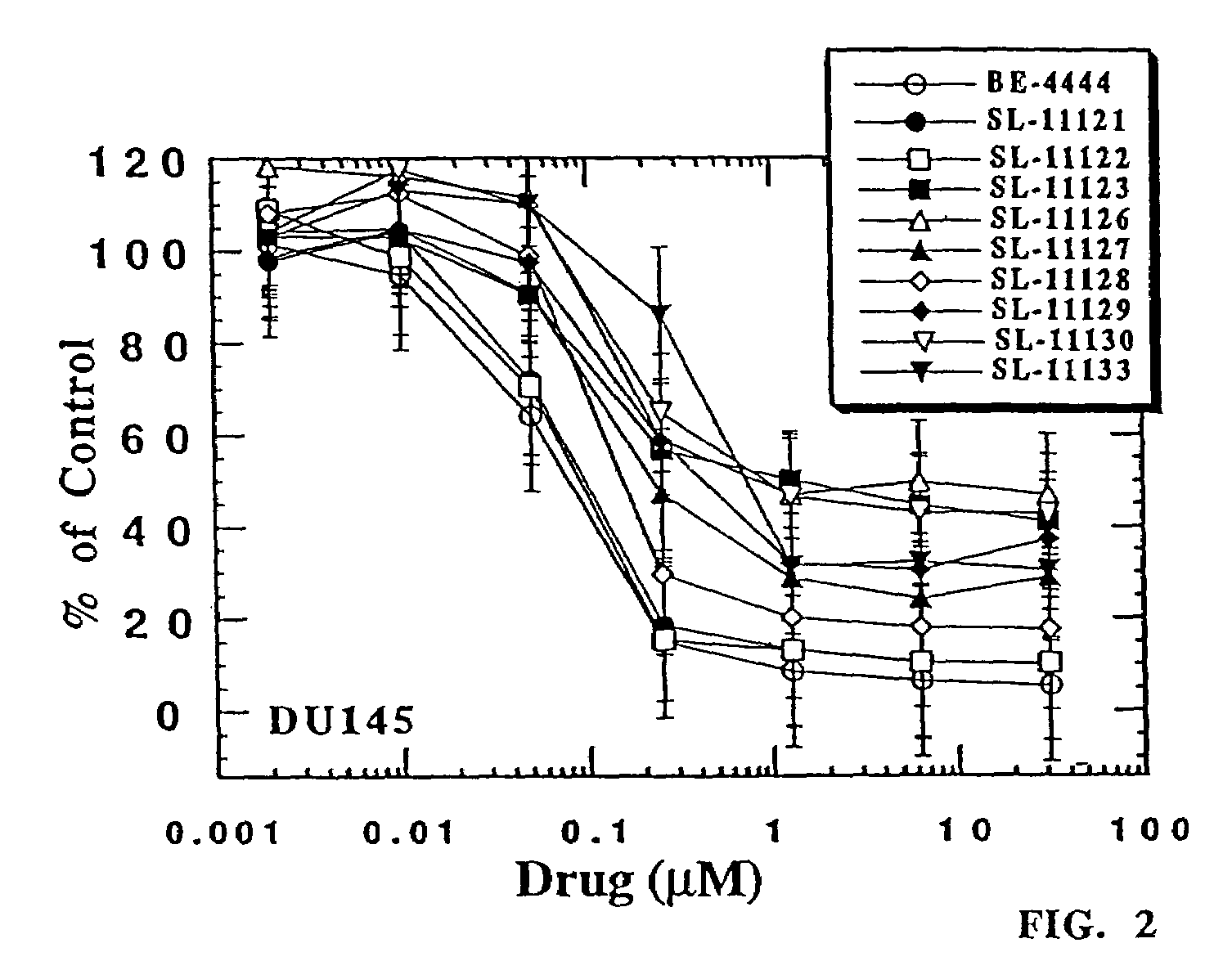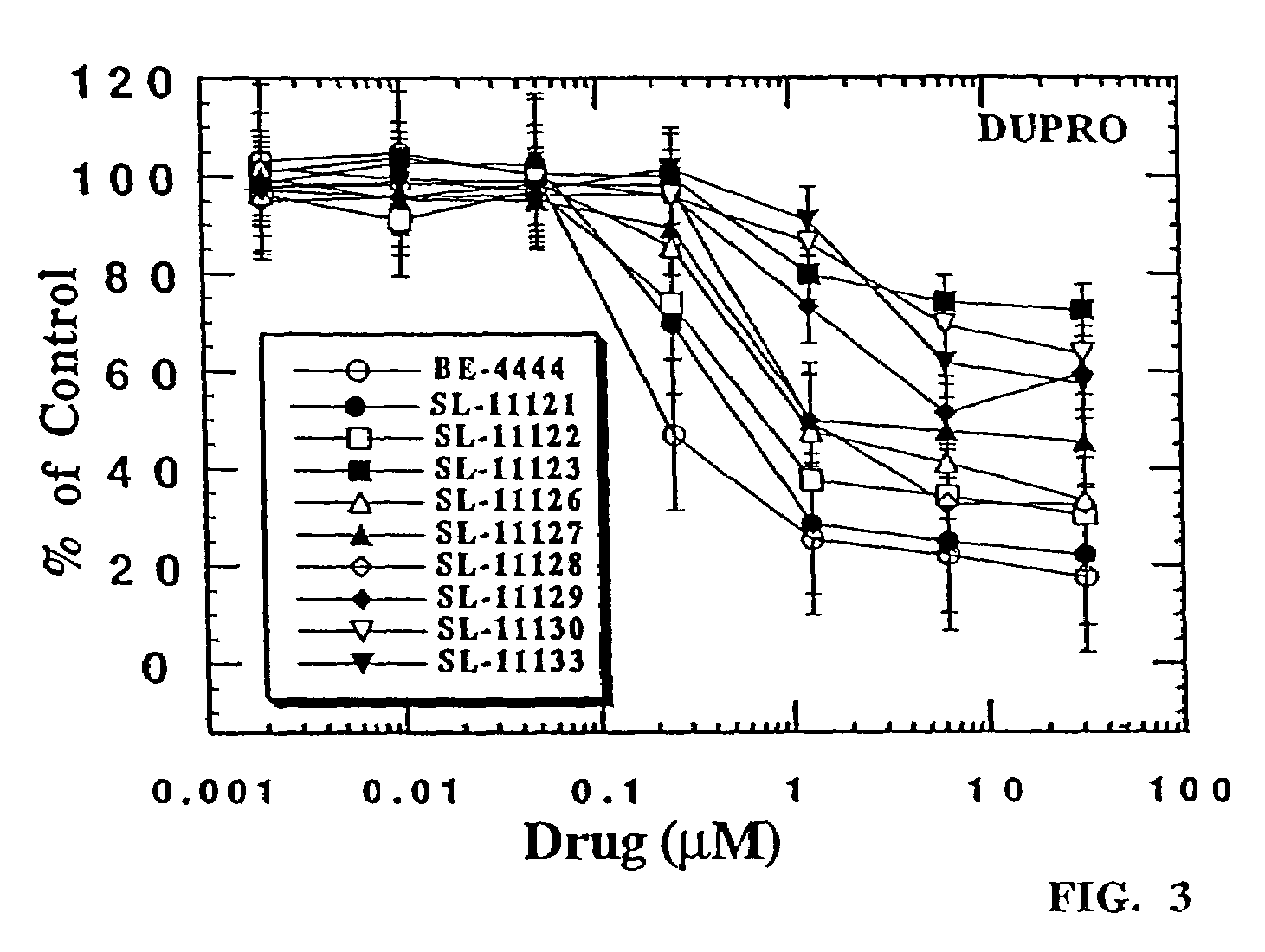Polyamine analog conjugates and quinone conjugates as therapies for cancers and prostate diseases
a technology of polyamine analog and quinone, which is applied in the field of therapeutic compositions, can solve the problems of prostate cancer that can take up to 10 years to kill the patient, and and achieve the effect of suppressing the proliferation of metastatic tumors
- Summary
- Abstract
- Description
- Claims
- Application Information
AI Technical Summary
Benefits of technology
Problems solved by technology
Method used
Image
Examples
example 1
Synthesis of Polyamine Compounds
[0234]Compound 2: NaH (80%, 1.08 g, 36 mmol) was added to a solution of amide 1 (6.81 g, 30 mmol) in DMF (50 ml) in an ice-water bath under N2. The mixture was stirred for 1 h and a solution of 4-bromobutyronitrile (4.88 g, 33 mmol) in DMF (10 ml) was added in portions. The mixture was stirred over night at 75° C. The solvent was distilled off, the residue taken up in chloroform washed with a saturated solution of ammonium chloride, dried (Na2SO4) and evaporated. The residue was purifid by flash chromatography on silica gel (hexane / ethyl acetate 3:1) to yield 8.0 g (90%) of 2 as a colorless oil. 1H-NMR (CDCl3) δ 1.05 (t, 3H), 1.90 (m, 2H), 2.30 (b, m, 5H), 2.60 (s, 6H), 3.20 (q, 2H), 3.35 (t, 2H), 6.95 (s, 2H); 13C-NMR (CDCl3): δ 12.50, 20.61, 22.43, 23.60, 31.05, 36.12, 40.39, 43.78, 118.62, 131.79, 132.67, 139.71, 142.41. MS-EI (m / z) 294 (M+).
[0235]Compound 4: Nitrile 2 (7.8 g, 27 mmol) was dissolved in a mixture of ethanol (150 ml) and concentrated...
example 2
Synthesis of Novel Quinone Derivatives
Synthetic Preparation of Quinone Compounds
[0317]Preparation of quinones of the invention is described below and depicted in the Figures. New chemistry was developed in order to construct drugs where the 1,2-naphthoquinone moiety is bound to a DNA minor groove binder unit or a DNA intercalator. While not wishing to limit the invention to any particular theory of operation, it is believed that the 1,2-naphthoquinone derivatives “poison” topoisomerase II and transform this essential DNA replication enzyme into a nuclease-type enzyme that cleaves DNA. It is postulated that this modification of topoisomerase II by the 1,2-naphthoquinones is very likely due to the alkylation of the thiol residues of the enzyme by the quinones (Michael additions). Scheme 501 outlines derivatization reactions leading to 1,2-naphthoquinone intermediates. The silver salt of 2-hydroxy-1,4-naphthoquinone was alkylated with the tert-butyl or benzyl esters of 5-bromo-pentanoi...
example 3
In Vitro Testing of the Efficacy of Novel Polyamine Analog Conjugates Against Tumor Cell Lines
[0430]The experiments described below are designed to evaluate newly synthesized polyamine analog conjugates described above against cultured human prostate carcinoma cell lines LNCaP and PC-3 for their effects on cell growth, cell-cycle regulation and polyamine regulatory responses. Analogs conjugated to a PSA-recognized polypeptide moiety are evaluated against LNCaP cells, which are high in PSA expression, and PC-3 cells, which are deficient in PSA expression. Polyamine analog conjugates useful in the present invention demonstrate specific killing in vitro of cells expressing PSA, but not cells not expressing PSA (or a lesser extent of killing).
Model Systems and Biochemical / Cellular Assays
[0431]On the basis of the rationale built around the unique nature of polyamine metabolism in the prostate gland, these experiments focus primarily, but not exclusively, on human prostatic carcinoma, mor...
PUM
| Property | Measurement | Unit |
|---|---|---|
| pH | aaaaa | aaaaa |
| temperature | aaaaa | aaaaa |
| temperature | aaaaa | aaaaa |
Abstract
Description
Claims
Application Information
 Login to View More
Login to View More - R&D
- Intellectual Property
- Life Sciences
- Materials
- Tech Scout
- Unparalleled Data Quality
- Higher Quality Content
- 60% Fewer Hallucinations
Browse by: Latest US Patents, China's latest patents, Technical Efficacy Thesaurus, Application Domain, Technology Topic, Popular Technical Reports.
© 2025 PatSnap. All rights reserved.Legal|Privacy policy|Modern Slavery Act Transparency Statement|Sitemap|About US| Contact US: help@patsnap.com



